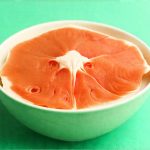Urinary tract infections (UTIs) are frustratingly common, impacting millions globally each year. For many individuals, UTIs aren’t isolated incidents but rather recurring battles that significantly affect quality of life. Often, the search for the root cause feels like a complex puzzle – standard medical testing may not always pinpoint specific triggers, leaving sufferers feeling helpless and frustrated. While bacterial infections are the primary cause, individual sensitivities to certain foods or beverages can play a surprising role in UTI frequency and severity. Understanding this connection requires careful self-observation, and that’s where food journaling comes into play as a powerful tool.
Food journaling isn’t about restrictive dieting; it’s about becoming an investigator of your own body. It’s a proactive step toward identifying potential links between what you consume and the occurrence of UTI symptoms. This method allows for a detailed record, beyond just listing foods, that connects dietary choices with physical experiences – timing, severity of symptoms, hydration levels, stress factors, even menstrual cycle phases if applicable. By meticulously tracking this information over time, patterns can emerge that might otherwise remain hidden, offering valuable insights to discuss with healthcare professionals and potentially modify your diet for better urinary health.
The Science Behind Food & UTI Triggers
The relationship between food and UTIs isn’t always straightforward. It’s not typically about specific foods causing a UTI directly (as bacteria are the primary culprit). Instead, certain dietary factors can contribute to an environment that makes you more susceptible or exacerbate symptoms when an infection is present. For example, high acidity levels in urine – potentially influenced by diet – can irritate the bladder and urethra, making it easier for bacteria to adhere and multiply. Similarly, foods that dehydrate the body concentrate urine, also fostering bacterial growth. Inflammation, a key component of UTI response, can be significantly impacted by dietary choices.
Foods containing high levels of oxalates, like spinach or rhubarb, have been implicated in bladder irritation for some people, potentially worsening UTI symptoms. Likewise, excessive sugar intake feeds both the body overall and any present bacteria, offering fuel for infection. Caffeine and alcohol are well-known diuretics – meaning they increase urine production – which can lead to dehydration if not adequately counterbalanced with water intake. It’s important to remember that everyone is different; what triggers one person might have no effect on another. This is why personalized tracking through food journaling is so crucial.
Furthermore, the gut microbiome plays a surprisingly significant role in overall health, including urinary tract health. A healthy gut flora can help modulate immune response and reduce inflammation. Diet directly impacts the composition of the gut microbiome; therefore, dietary choices can indirectly influence UTI susceptibility. Focusing on probiotic-rich foods and fiber to support a thriving gut ecosystem can be beneficial, but again, individual responses vary.
Food Journaling: A Step-by-Step Guide
Starting a food journal doesn’t have to feel overwhelming. The key is consistency and detail. Here’s a practical guide to get you started:
- Choose Your Method: You can use a physical notebook, a spreadsheet on your computer, or one of the many food journaling apps available (MyFitnessPal, Cronometer, etc.). Select whatever method suits your lifestyle best. The important thing is that it’s accessible and easy to maintain.
- Record Everything: Don’t just list what you ate; be specific. Include portion sizes, preparation methods (e.g., fried vs. baked), brand names if relevant, and any ingredients used. Also, document everything consumed – including drinks, snacks, condiments, and even chewing gum.
- Track Symptoms: Alongside your food intake, meticulously record any UTI-related symptoms you experience. This includes:
- Frequency of urination
- Urgency
- Burning sensation during urination
- Pelvic pain or pressure
- Cloudy urine
- Blood in urine
- Note Context: Don’t limit your journal to food and symptoms. Include other relevant factors:
- Hydration level (how much water did you drink?)
- Stress levels (on a scale of 1-10)
- Physical activity
- Sleep quality
- Menstrual cycle phase (if applicable)
- Review and Analyze: After at least two to four weeks of consistent journaling, begin analyzing your data. Look for patterns – do symptoms consistently appear after consuming certain foods or beverages? Are there correlations between hydration levels and symptom severity? Don’t jump to conclusions; look for repeated connections before making dietary changes.
Identifying Common UTI Suspects
While food journaling is highly individualized, some foods and beverages are more commonly associated with UTI triggers than others. These aren’t necessarily bad foods – just potentially problematic for individuals prone to UTIs.
- Citrus Fruits & Juices: While Vitamin C is beneficial overall, the high acidity can irritate the bladder in some people.
- Tomatoes & Tomato-Based Products: Similar to citrus, the acidity of tomatoes may contribute to bladder irritation.
- Caffeine: As a diuretic, caffeine increases urine production and can lead to dehydration if not balanced with adequate water intake.
- Alcohol: Another diuretic, alcohol also weakens the immune system, potentially increasing susceptibility to infection.
- Spicy Foods: Can irritate the bladder lining in sensitive individuals.
- Artificial Sweeteners: Some artificial sweeteners have been linked to bladder sensitivity and irritation.
- Sugary Drinks & Foods: Provide fuel for bacterial growth.
It’s essential to experiment carefully. Eliminate one potential trigger at a time for a week or two while continuing your food journal, then reintroduce it to see if symptoms reappear. This elimination diet approach helps pinpoint specific sensitivities.
Working with Your Healthcare Provider
Food journaling is a valuable self-management tool but should never replace professional medical advice. Share your detailed food journal with your doctor or a registered dietitian. They can help you interpret the data, identify potential deficiencies, and develop a personalized dietary plan that supports your urinary health. Don’t self-diagnose or make drastic changes to your diet without consulting a healthcare professional.
Your healthcare provider may recommend further testing to rule out other underlying causes of recurrent UTIs or to assess your overall health status. They can also provide guidance on appropriate hydration strategies, probiotic supplementation, and other interventions that complement dietary modifications. Remember, the goal isn’t necessarily to eliminate all potential triggers but to identify personalized adjustments that minimize symptoms and improve quality of life. A collaborative approach – combining self-awareness through food journaling with professional medical guidance – is the most effective path toward managing recurrent UTIs.





















